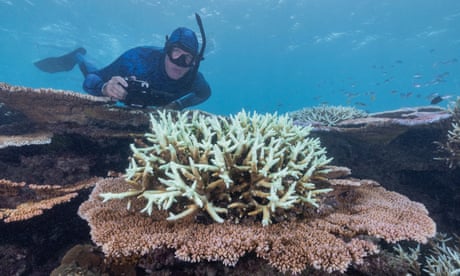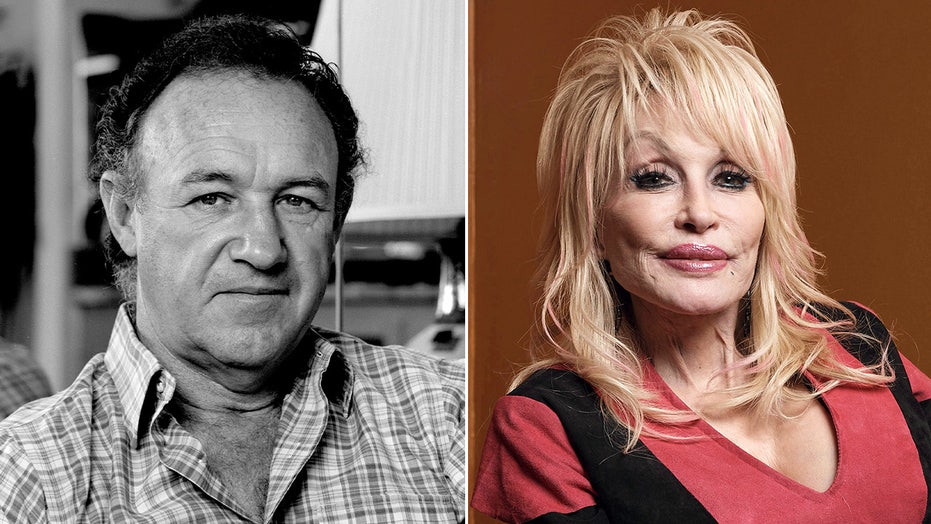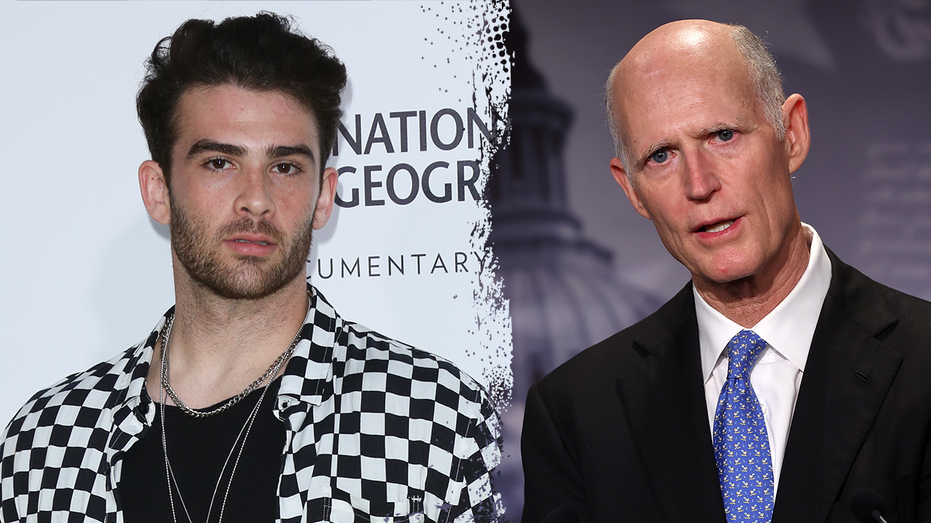- by foxnews
- 05 Mar 2025
‘It’s not supposed to be white’: one of the Great Barrier Reef’s healthiest reefs succumbs to bleaching
‘It’s not supposed to be white’: one of the Great Barrier Reef’s healthiest reefs succumbs to bleaching
- by theguardian
- 22 Mar 2022
- in news

Through a snorkel mask, the corals struggling for survival in the heat are easy to spot. Some have turned white while others are pouring out a fluorescent pigment into their flesh - it's spectacular, but it's also a sign of a coral in deep distress.
This is John Brewer Reef about 70km off Townsville in Queensland - the centre of a widespread coral bleaching event. For hundreds of kilometres in either direction, reefs are going through the same battle.
As we float over one of about 3,000 individual reefs that make up the vast Great Barrier Reef on Sunday afternoon, two scientists are touching down in Brisbane for a 10-day United Nations monitoring mission.
Just to the south, there's another mission. Scientists are in the air, surveying the bleaching from above in a series of government-chartered flights that, by the middle of this week, will have traversed the entire length of the 2,300-km reef.
As the Guardian enters the water, the first thing Dr Adam Smith does is glance at his dive watch. It tells him the water is 29C. That is warm.
Staghorn corals clinging to the reef edge come into view and almost all are partly or entirely white.
Thousands of colourful reef fish, some graceful sharks, and lots of still-healthy corals share the space with the strugglers. Soft corals nestled in the gaps on the top of the reef are white.
Other corals shaped like giant dinner plates are coping better - but about half are giving off a spectacular but worrying fluorescent show of pinks and blues.
"The coral is basically starving," says Smith, the managing director of consultancy firm Reef Ecologic.
"We've definitely just seen corals that are stressed and white.
The UN mission to the reef will examine the state and federal government's response to managing the reef and their policies.
Last year, the world heritage committee ignored the scientific advice from Unesco that it should be placed on the "in danger" list because of the impact of global heating and slow progress on combating pollution running into the reef.
Coral bleaching across thousands of kilometres of the world's biggest reef system is just one of Australia's battles with the climate emergency. Bushfires, flooding, shifting rainfall, heatwaves and extreme weather are all being super-charged by rising greenhouse gas levels in the atmosphere.
The reef's marine park authority is waiting until its aerial surveys are completed before it can compare this bleaching to other events in 1998, 2002, 2016, 2017 and 2020.
Hughes and others who reviewed the Guardian's images from John Brewer said there's a chance many corals could survive if water temperatures drop - and there are signs they will.
"That's a moderately bleached reef," says Hughes, after seeing drone pictures. Early signs from the aerial flights suggest in this central region John Brewer may have faired better than other reefs.
But Hughes warns there's a "physiological cost even if the coral lives".
Being heat-stressed and producing fluorescent pigments or losing their colour entirely weakens the corals, making them more susceptible to disease, slowing their growth and affecting their ability to reproduce.
"It's depressing to think about," says Hughes.
On the boat on Sunday afternoon, Paul Crocombe, the owner of Adrenalin Snorkel and Dive, tried to navigate the complex story of bleaching and reef health in a briefing to the passengers. He's seen this reef bleach before and he's seeing it today.
"There's plenty of evidence of bleaching here. That's severe for [those corals], but there's lots of corals that have still got plenty of colour.
"The reef is really resilient. It will come back. But it will be hard for it to keep up if they [bleaching events] come along too often. The 2016 event there was big areas of white [at John Brewer]. This is serious, but it's not severe.
"These last two weeks we have seen an increase in the amount of bleaching. It's always a concern.
"But how many times have you heard that the reef will be dead in 20 or 30 years. That's just not true.
"Yes it will change and what we've seen today could be quite different to what you'll see in 30 years, but there will be a reef and there will be corals. We get asked if there's anything still worth seeing. There is so much misinformation."
Crocombe's business doesn't need more bad news. He says he has reached the limit of his borrowing after visitor numbers crashed through the pandemic.
Crocombe says there needs to be rapid action to cut greenhouse gas emissions, and thinks all pollution - that which comes from agriculture during floods and what humans pump into the air from burning fossil fuels - should be taxed.
Jeremy Gacel, 31, was among the divers on John Brewer. He's been travelling the world for nearly five years, diving in Central America and Australia's west coast. This was his first dive on the Great Barrier Reef.
Smaller fish are usually hard to see in the dark staghorn corals, but as they turn white they're easier to see. "It was full of life and lots of fish. The bleaching is a bit disappointing - it's sad for me because I love diving. It's not supposed to be white."
Does he know what's causing the bleaching? "Humans," he says.
"It's not just the ocean. I'm an ice climber and I've seen the ice disappearing. The water is getting warmer and warmer and reefs are super fragile. I know."
- by foxnews
- descember 09, 2016
Popular travel destination breaks annual tourism record, sets new goal of 60M visitors
After breaking an annual tourism record in 2024, Japan looks to reach 60 million visitors by 2030. Officials tell Fox News Digital how Japan plans to attract visitors.
read more


